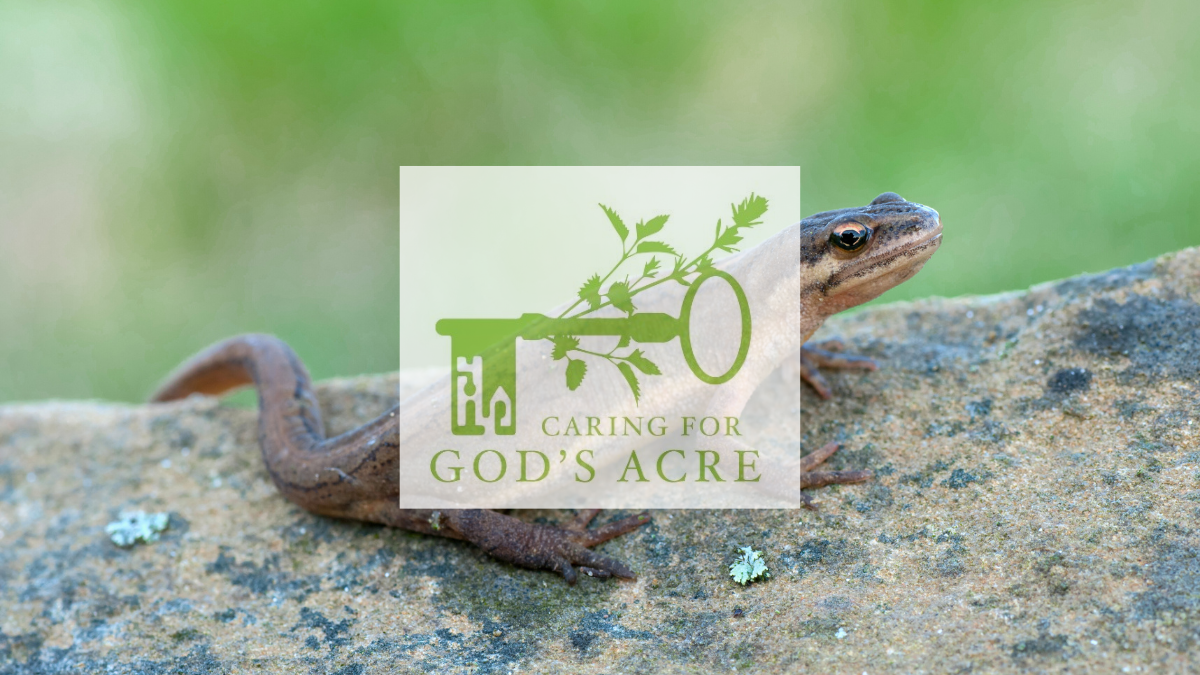
Overwintering reptiles and amphibians
Churchyards, chapel yards and cemeteries are great places to find both amphibians and reptiles. These two groups include frogs, toads, newts, lizards and snakes. The first three can come as a surprise as burial grounds rarely have ponds in them but actually, frogs, toads and newts all spend much of their time on land and really use ponds mainly for breeding and laying spawn. Amphibians (frogs, toads and newts) and reptiles (lizards and snakes) all hibernate, except for some individuals in particularly mild winters, and whilst some amphibians may overwinter within ponds, most find a suitable spot on land.
Both amphibians and reptiles need to overwinter in places that are frost-free and unlikely to flood. They need to be protected from predators and from disturbance. This might be within the soil, perhaps using a crack caused by grave subsidence or beneath tree roots, under stones and grave kerbs, inside a chest tomb with a suitable hole or wide crack to clamber in, between the stones of a wall, under a pile of leaves or in a pile of deadwood. Woodland soil, with shade and leaves can be particularly good.
One of the differences between amphibians and reptiles is in their skin. Amphibians have smooth skin which can look velvety or have a bumpy, warty texture. Their skin is permeable which means they can dry out. When on land, they need to keep moist, so will overwinter in a damp and shady spot, often under leaves or deadwood. Reptiles have scales and impermeable skin so don’t need a damp spot and may use compost heaps as well as cracks in walls and monuments. Amphibian skin can also pick up chemicals easily, herbicides, pesticides and fertilizers can be fatal, again making burial grounds, with their lack of chemicals, particularly suitable. N.B. you may see coloured frogs that have picked up the colour of the soil where they overwinter, these can be quite brightly coloured red, orange or yellow.
Try to imagine that you are an amphibian or reptile and take a good look around your local churchyard or cemetery and you’ll probably see that its full of good spots to hibernate. You can increase these however. How about making a dead hedge or pile of deadwood in a shady spot? Do you have a compost heap? Try not to empty it after the end of October in case its in use for overwintering. Tussocks of coarse grass and grassland plants like hogweed, particularly when next to a wall are favoured by slow worms, probably the most common reptile found in burial grounds. Shrubs and scrub often offer suitable nooks and crannies at their base.
By November its likely that amphibians and reptiles will be tucked safely away, although the timing does depend on the temperature in a particular year, but it’s nice to know that they might be there awaiting the warmer weather of spring.
All the best,
Harriet Carty
Diocesan Churchyard Environmental Advisor
www.caringforgodsacre.org.uk - individuals and groups in the diocese receive 20% members discount on all CfGA materials. Use the discount code diomem22
